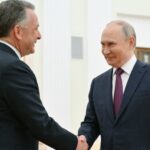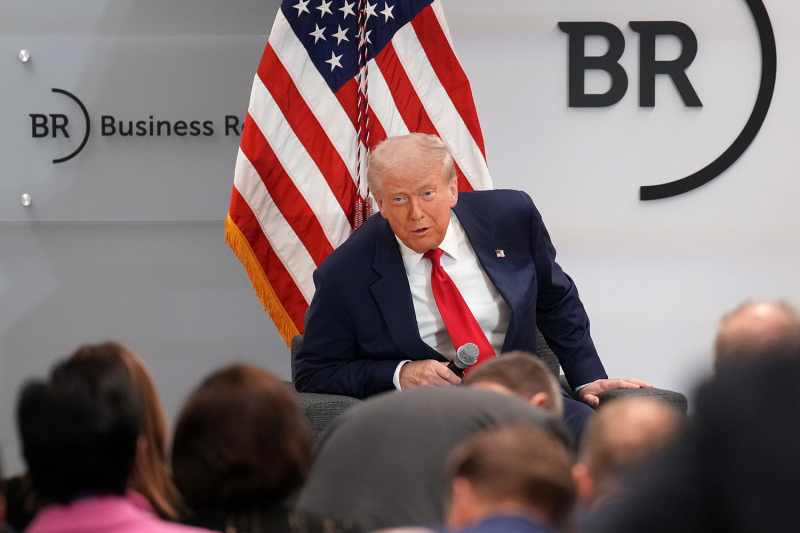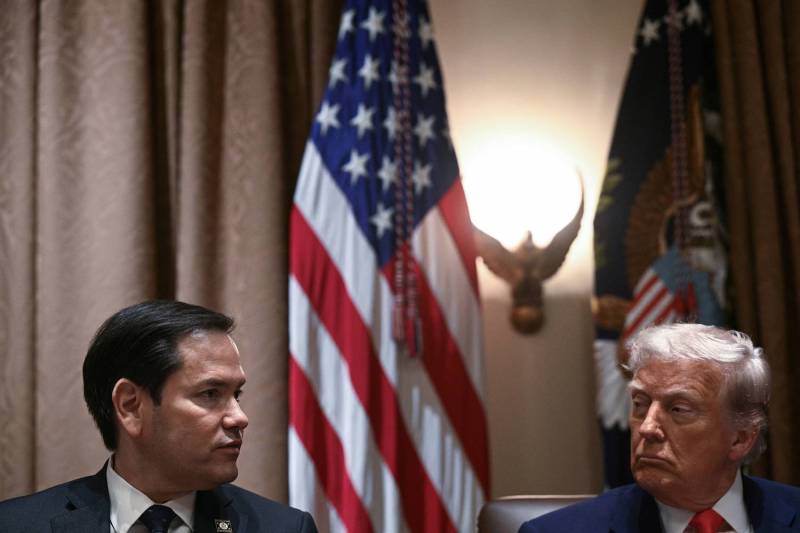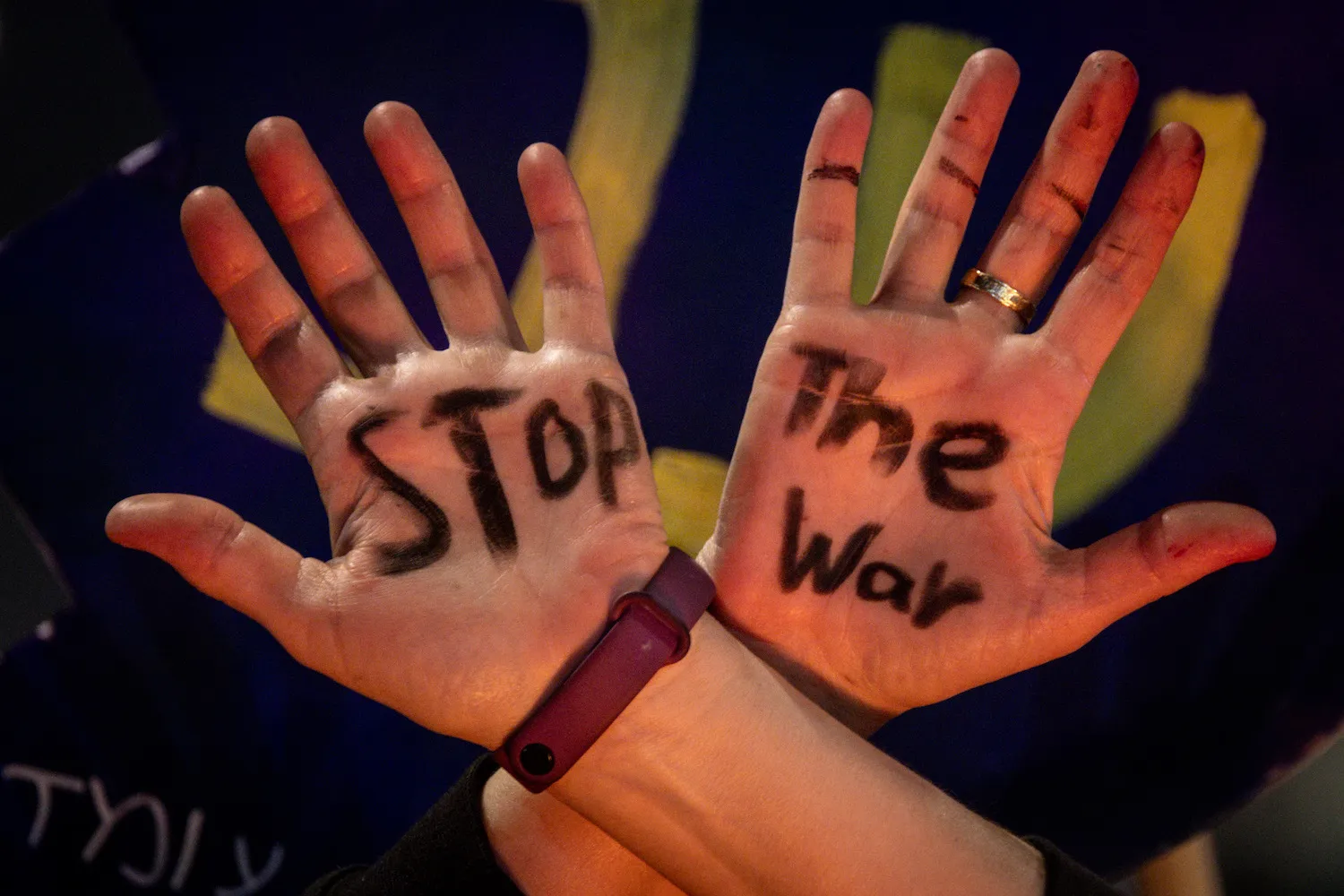There’s Only One Good Iran Deal

There’s Only One Good Iran Deal
Multiple kinds of agreements are possible—but only one would be effective.
A picture shows copies of Iranian daily newspapers,at a newsstand in Tehran on January 21, 2025. ATTA KENARE / AFP
In a wide-ranging interview with Time magazine last week, U.S. President Donald Trump said, “I think we’re going to make a deal with Iran. Nobody else could do that.” He then tapped Michael Anton, the State Department’s policy planning director, to lead technical negotiations over Iran’s disputed nuclear program.
With the technical talks kicking off, it is time to assess whether a new and effective nuclear deal between Iran and the United States is feasible and, if so, what it might look like.
In a wide-ranging interview with Time magazine last week, U.S. President Donald Trump said, “I think we’re going to make a deal with Iran. Nobody else could do that.” He then tapped Michael Anton, the State Department’s policy planning director, to lead technical negotiations over Iran’s disputed nuclear program.
With the technical talks kicking off, it is time to assess whether a new and effective nuclear deal between Iran and the United States is feasible and, if so, what it might look like.
A good nuclear deal needs to cut off Iran’s possible pathways to the bomb. To build a nuclear weapon, Iran must produce at least one bomb’s worth of nuclear fuel, fashion that fuel into a nuclear weapon, and have some means of delivering that weapon to an intended target. Since constructing a basic nuclear warhead is straightforward, and Iran already possesses the largest ballistic missile stockpile in the Middle East, the production of nuclear fuel is the most important and most difficult remaining step. For this reason, past diplomatic efforts have centered on Iran’s uranium enrichment program.
Unfortunately, Iran’s enrichment program is very far advanced, and the world is running out of time. Last July, then-U.S. Secretary of State Antony Blinken stated that if Iran made a break for it, it could produce one bomb’s worth of weapons-grade uranium in one to two weeks. That timeline has presumably only shrunk since then.
Simply standing back and allowing Iran to cross the nuclear threshold would be unacceptable. A nuclear-armed Iran would lead to further nuclear proliferation in the Middle East and possibly around the globe. Tehran would use nuclear weapons to coerce other countries and as a backstop for aggression and terrorism. And Iran could conduct a nuclear attack against U.S. allies in the region, such as Israel, or—as the ranges of its missiles increase—against the United States. Protecting the American people from this kind of existential threat is any president’s foremost priority, and Trump has rightly declared that he will not permit Iran to have a nuclear weapon.
The best possible solution would be a negotiated settlement, and there are three obvious shapes that a new nuclear deal could take: JCPOA redux, zero enrichment, or a “longer and stronger” deal.
An obvious starting place is the 2015 deal negotiated by the Obama administration, the Joint Comprehensive Plan of Action (JCPOA). The JCPOA was a bad deal for the United States, and Trump was right to scrap the agreement in May 2018. The deal contained many flaws, but the most egregious were the sunset clauses. Many casual observers did not notice, but the JCPOA was only a temporary fix. According to the terms of the deal, the restrictions on Iran’s nuclear program expired over time. By 2030, there would have been no remaining restrictions on Iran’s uranium enrichment program. The Nuclear Nonproliferation Treaty (NPT) would still legally require Iran “not to manufacture or otherwise acquire nuclear weapons,” but the NPT does not put any limits on—or indeed even mention—uranium enrichment.
Tehran could have then produced as much weapons-grade uranium as it wanted, and the world could have no longer realistically stopped Iran from building a bomb if it decided to violate its NPT commitments and cross the nuclear threshold. It is for this reason that Israeli Prime Minister Benjamin Netanyahu correctly warned that the JCPOA provided Iran with a patient “path to the bomb.”
Of course, an updated JCPOA could extend the sunset clauses—say another 15 years, to 2040—but the fundamental flaw remains. Trump should not agree to a return to a deal along these lines. Moreover, it is unlikely that he would agree to something so closely resembling the JCPOA—a deal he roundly criticized and then shredded.
At the other end of the spectrum is a zero-enrichment deal. Under this arrangement, Iran would agree to shut down its uranium enrichment program altogether, but it could still retain truly civil nuclear facilities, such as power reactors. U.S. National Security Advisor Mike Waltz, Secretary of State Marco Rubio, and, at times, Middle East envoy Steve Witkoff have said this is the goal of renewed nuclear negotiations.
This would be the best possible outcome. Contrary to Iran’s false cover story, it does not need to make its own nuclear fuel to have a peaceful nuclear program. The vast majority of countries with civil nuclear programs, such as Mexico, Vietnam, and the United Arab Emirates, import fuel from nuclear suppliers, such as France or Russia; run it through their nuclear reactors; and ship back the spent fuel when it is finished. If Iran truly wanted a peaceful nuclear program, it could do something similar, and the nuclear crisis would be solved.
Negotiating and implementing the terms of a zero-enrichment agreement would also be straightforward. The JCPOA was so complicated because it allowed Iran to retain such a large nuclear program. The deal required years to negotiate and dozens of pages to spell out because it included detailed provisions for numbers of enrichment facilities, numbers of centrifuges, levels of enrichment, quantities of uranium enrichment stockpiles, inspections of enrichment facilities, and more. A zero-enrichment deal, on the other hand, would be conceptually simple, and its terms could fit on one side of a single sheet of paper.
Tehran will likely resist such an effort, however. To preserve a nuclear weapons option (which I believe is Iran’s true objective), it will need to maintain a significant uranium enrichment program. Moreover, Tehran’s self-proclaimed “right to enrich” has already been recognized by the international community when it embraced the JCPOA. Even some of America’s European allies might see a demand for zero enrichment as too extreme. A senior Iranian official close to Iran’s negotiating team said recently that “zero enrichment is unacceptable.”
Washington could perhaps coerce Iran’s supreme leader, Ayatollah Ali Khamenei, into making concessions through increased economic pressure and threats of military strikes, but then again, maybe not. Some Iran experts believe Khamenei may choose to suffer increased economic and military pain over a humiliating climbdown in negotiations.
If a renewed JCPOA is unacceptable and a zero-enrichment deal proves impossible, then what is left? There is an in between option. In fact, this was the Biden administration’s plan for Iran. They ultimately agreed with some of Trump’s criticism of the original JCPOA and hoped, therefore, to return to the JCPOA and then use that as a baseline to negotiate a “longer and stronger” framework, but Tehran refused to go along with this plan.
The space between the JCPOA and zero enrichment is the area most ripe for a future agreement. The two sides could agree, for example, to allow Iran to maintain a uranium enrichment program with permanent restrictions—that is, without the JCPOA’s fatal sunset clauses. Witkoff has previously suggested that allowing an Iranian enrichment program with restrictions might be acceptable to the United States.
Trump prides himself on his negotiating prowess, and such a deal would allow him to claim correctly that he achieved a better deal than former President Barack Obama or any of his predecessors. Unlike the JCPOA, a deal with permanent restrictions would also deny Iran a patient pathway to the bomb. Under such a deal, Iran could not become a de facto nuclear weapons power and also remain in compliance. Trump might also be able to get the U.S. Senate to ratify such an agreement as a formal treaty. Senate Republicans would likely support the president, and it would be hard for Democrats to reject a deal that objectively approves on the JCPOA—a deal they strongly supported.
To be sure, there are downsides to this approach as well. It would further reinforce Iran’s belief in its right to enrich and undermine a traditional U.S. nonproliferation standard. It would allow Tehran to continue to refine its uranium enrichment skills for a possible future nuclear breakout. Some Republican hawks and regional allies such as Israel would almost certainly criticize the deal for not being strong enough. And convincing Iran to sign up—even for this compromise agreement—would still be difficult. It made permanent restrictions a red line in the JCPOA negotiations, and it was unwilling to return even to the terms of the JCPOA in the Joe Biden years.
Yet, following the loss of its ally in Syria and the decimation of its proxies Hamas and Hezbollah, Iran is at its weakest position in years. It may now be more willing to make a deal.
If not, the United States can, and should, greenlight Israeli military action and offer U.S. military support to shut the enrichment facilities down. Trump is open to this option. He told NBC News in late March, “If they don’t make a deal, there will be bombing. … It will be bombing the likes of which they have never seen before.”
For a pragmatic president who wants to avoid military conflict and renegotiate a deal that improves on his predecessors’ efforts, however, the pursuit of a “longer and stronger” deal may prove to be even more attractive.
Matthew Kroenig is a columnist at Foreign Policy and vice president and senior director of the Atlantic Council’s Scowcroft Center for Strategy and Security and a professor in the Department of Government and the Edmund A. Walsh School of Foreign Service at Georgetown University. His latest book, with Dan Negrea, is We Win, They Lose: Republican Foreign Policy and the New Cold War. X: @matthewkroenig
More from Foreign Policy
-

A drawn illustration of a Trump whirlwind on a red background Four Explanatory Models for Trump’s Chaos
It’s clear that the second Trump administration is aiming for change—not inertia—in U.S. foreign policy.
-

Marco Rubio is seen up close, sitting on a couch beside J.D. Vance. Marco Rubio’s Soulless Crusade
The U.S. secretary of state stands for no principle other than serving the man who appointed him.
-

Soldiers from various NATO allies take part in a military exercise at the Smardan Training Area in Smardan, Romania, on Feb. 19. America Will Miss Europe’s Dependence When It’s Gone
European self-reliance for security will cost U.S. jobs, profits, and influence.
-

A collage photo illustration shows Donald Trump gesturing with arms wide. In front of him are headshots of Benjamin Netanyahu and Vlodymyr Zelensky, images of immigratns and ICE police, a tattered EU flag and America First signs. Trump’s First 100 Days on the Global Stage
Ten thinkers on what to make of the opening salvo of the president’s second term.









Join the Conversation
Commenting on this and other recent articles is just one benefit of a Foreign Policy subscription.
Already a subscriber?
.
Subscribe
Subscribe
View Comments
Join the Conversation
Join the conversation on this and other recent Foreign Policy articles when you subscribe now.
Subscribe
Subscribe
Not your account?
View Comments
Join the Conversation
Please follow our comment guidelines, stay on topic, and be civil, courteous, and respectful of others’ beliefs.
Change your username |
Log out
Change your username:
CANCEL
Confirm your username to get started.
The default username below has been generated using the first name and last initial on your FP subscriber account. Usernames may be updated at any time and must not contain inappropriate or offensive language.